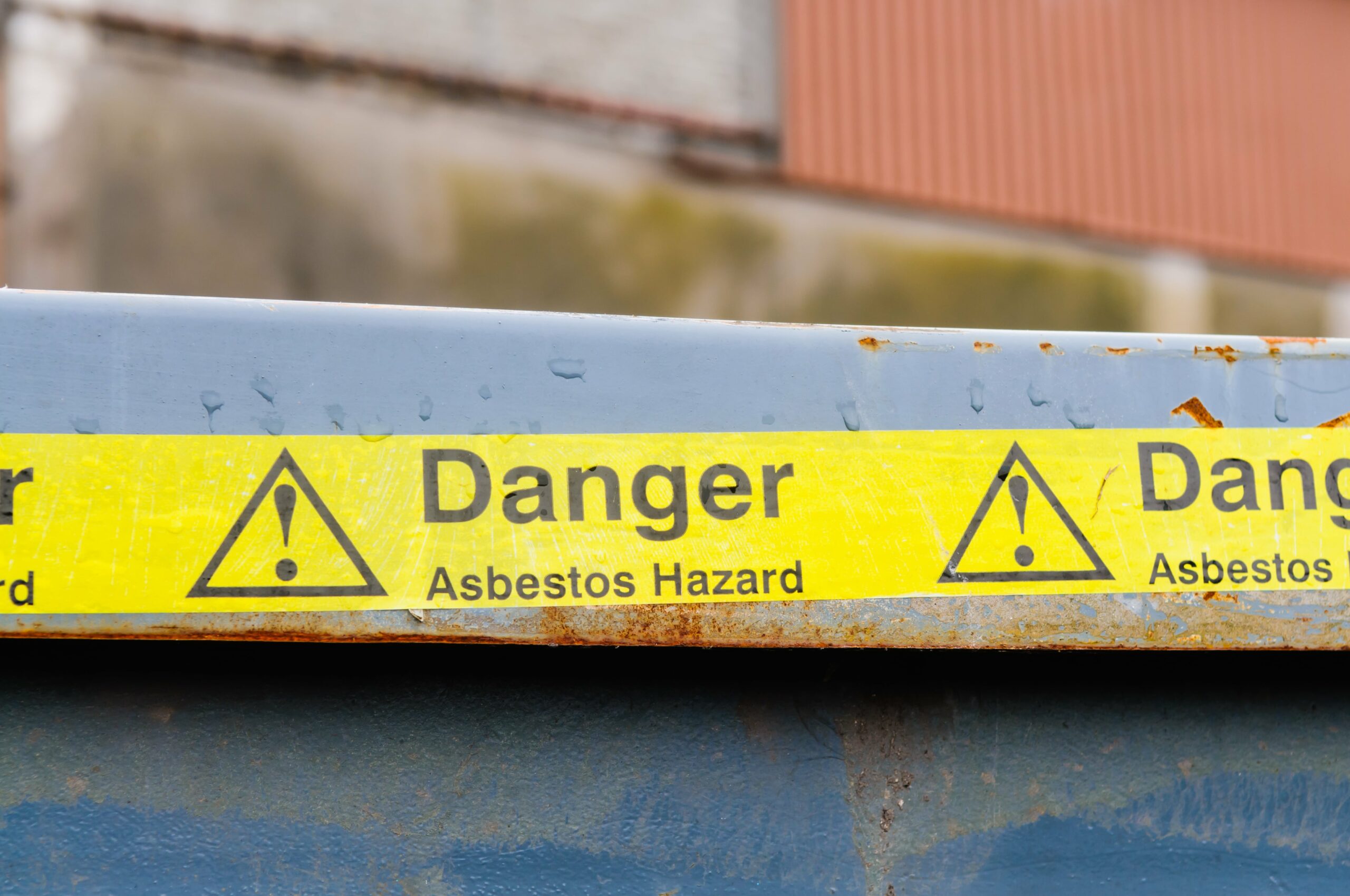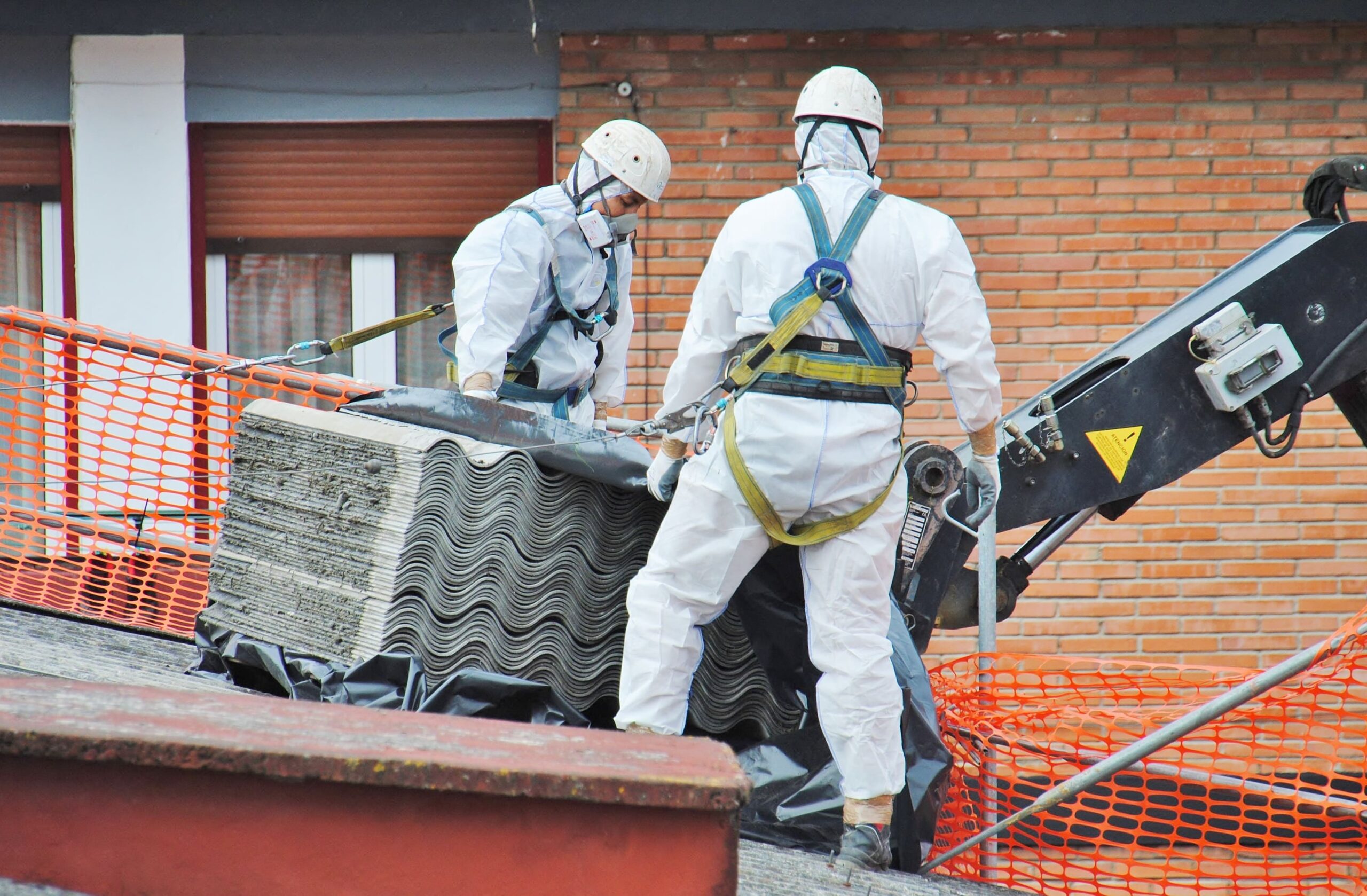BLOG
HSE continues to expand its asbestos campaign
Written by Nick Wilson on 16 April 2024

The dangers of asbestos exposure are well documented. Given these dangers, the Health and Safety Executive (HSE) launched a new campaign earlier this year called Asbestos: Your Duty to highlight the risk of asbestos in buildings and improve people’s understanding of what the legal duty to manage asbestos involves.
The HSE’s focus on the management of asbestos started with visits to schools last year but this new campaign is now being expanded to cover all buildings that may contain asbestos, making it important for all employers to ensure they are taking the necessary actions to address asbestos risks.
Asbestos health risks
Asbestos, a naturally occurring mineral fibre known for its strength, heat resistance, and insulating properties, was widely used in post-war construction before being was completely banned in 1999.
Despite desirable physical properties, asbestos poses serious health risks when its fibres are released into the air and then inhaled or ingested. Prolonged exposure to asbestos can cause lung diseases such as asbestosis, lung cancer, and mesothelioma, a rare but aggressive cancer.
Indeed, according to HSE statistics, there are an estimated 12,000 lung disease deaths each year estimated to be linked to past exposures at work – 20% of these deaths are from mesothelioma, which is almost always caused by exposure to asbestos, and a further 20% are due to asbestos-related lung-cancer.
The HSE reiterates that while asbestos can become dangerous when disturbed or damaged, people who work in or visit buildings containing asbestos will not be exposed to asbestos if it is properly managed, hence its recent campaign.
Do you need support?
Speak to us for an honest, no obligation chat on:
0345 226 8393 Lines are open 9am – 5pm
‘Asbestos – Your Duty’
The HSE’s ‘Asbestos – Your Duty’ campaign targets those responsible for managing asbestos in the building, known as dutyholders. This could be the building owner, the landlord for the premises, the business owner, or the person or organisation with clear responsibility for the building’s maintenance or repair.
Dutyholders must ensure that workers and building users are protected from the risks of exposure to asbestos.
The duty to manage asbestos applies to a range of non-domestic buildings, including premises like factories, warehouses, offices and shops, and public buildings like hospitals, schools, premises used for religious worship, museums and libraries.
If you’re not sure whether you have a duty to manage asbestos, the HSE’s quick three-question quiz should provide clarity.

What does the law require?
In the UK, the law regarding the management of asbestos in workplaces is primarily governed by the Control of Asbestos Regulations 2012, which outline several critical requirements:
There is a legal duty for those responsible for maintenance and repair of non-domestic premises to manage the risks from asbestos. This dutyholder must identify the presence of asbestos, assess the risks, and manage these risks to prevent exposure.
Dutyholders must conduct a suitable and sufficient asbestos survey to locate and assess the condition of asbestos-containing materials (ACMs) within the premises.
Based on the survey findings, dutyholders must assess the risks associated with ACMs and develop a plan to manage and monitor these risks.
A written asbestos management plan must be prepared detailing how the risks will be managed, including regular inspections, monitoring, and actions to be taken in case of disturbance or damage.
A written asbestos management plan must be prepared detailing how the risks will be managed, including regular inspections, monitoring, and actions to be taken in case of disturbance or damage.
Dutyholders must take measures to prevent the release of asbestos fibres, including labelling of ACMs, implementing safe work procedures, and providing appropriate personal protective equipment (PPE).
- Certain work with asbestos, such as removal or repair, must be notified to the relevant enforcing authority, i.e. the HSE.
If you are responsible for managing asbestos and have not yet taken these steps, it is imperative to act promptly to comply with legal requirements. Failure to comply with the regulations can result in legal penalties, including Fees for Intervention and possible fines and imprisonment, particularly if asbestos exposure leads to harm or disease among workers.
Just recently, a company director was jailed for eight months after failing to protect workers from exposure to asbestos at a student development project.
An investigation by the HSE revealed that the company had removed an estimated 10 tonnes of asbestos insulating board (AIB) during the refurbishment in late 2019 and early 2020.
The dangerous materials were stripped out by workers who were:
- Unqualified to do the job; and
- Unaware of the risks to their health.
Tips for reducing asbestos risk
There are a number of steps employers can take to protect people from the risks of asbestos and prevent their organisation from falling foul of the law, starting with informing and instructing employees right through to safe removal and monitoring.
Informing and instructing employees:
- Inform and instruct employees who are likely to disturb asbestos, such as caretakers, teachers, cleaners, etc., of its location.
- Inform contractors who are working on the premises of the location of asbestos.
Documentation and management:
- For buildings built pre-2000, make sure you have an up-to-date asbestos management survey, asbestos register, and management plan. These documents should be reviewed/updated annually.
- Appoint a designated person to manage asbestos within the school and provide them with training, such as an asbestos awareness course.
Emergency procedures:
- Put emergency procedures in place for the eventuality that asbestos-containing material (ACM) is (or is thought to be) disturbed.
- Have information in place for emergency services as to the location of asbestos.
Asbestos removal and labelling:
- Ensure asbestos is removed safely as advised by your asbestos survey.
- Where required, label asbestos as advised by your asbestos survey.
Monitoring:
- Carry out asbestos monitoring annually, or as directed by your survey/management plan.
- Put in place a Refurbishment & Demolition (R&D) survey prior to any building upgrades.
Further information
To support dutyholders, the HSE has recently updated its web pages on the duty to manage asbestos in buildings.
These pages contain helpful guidance on what the legal duty is and the steps required to comply with the law, as well as who the dutyholder is (depending on the type of building, etc.) and what they must do. The HSE has also produced a template asbestos management plan and asbestos register, along with examples of how asbestos can be managed.
Related Content
Need support?
If you’re looking for professional support to help reduce the risk of asbestos in your workplace, WorkNest can advise you on how to create an asbestos survey tailored to your building and assist in the formation of a subsequent management plan.
For more information, call 0345 226 8393 or request your free consultation using the button below.




